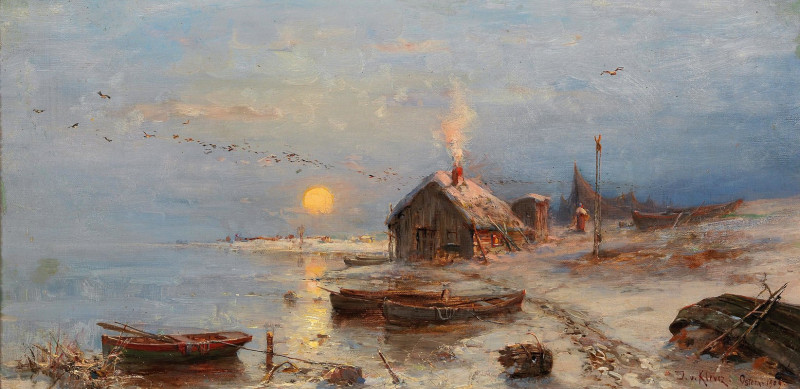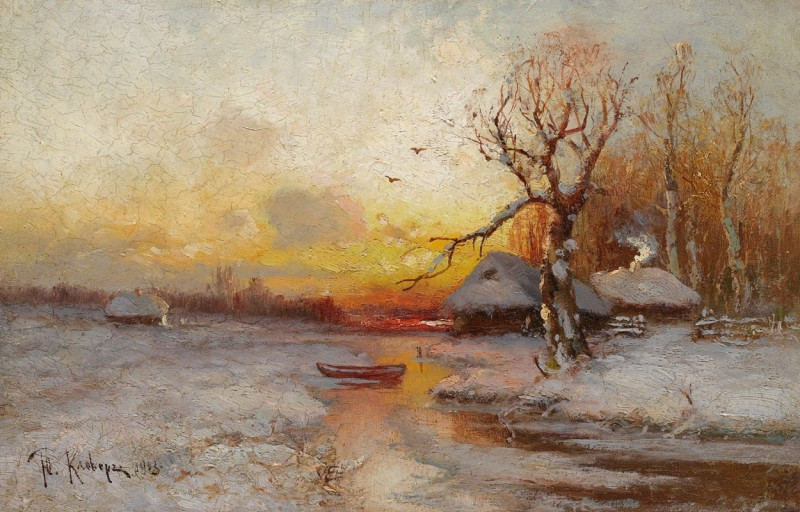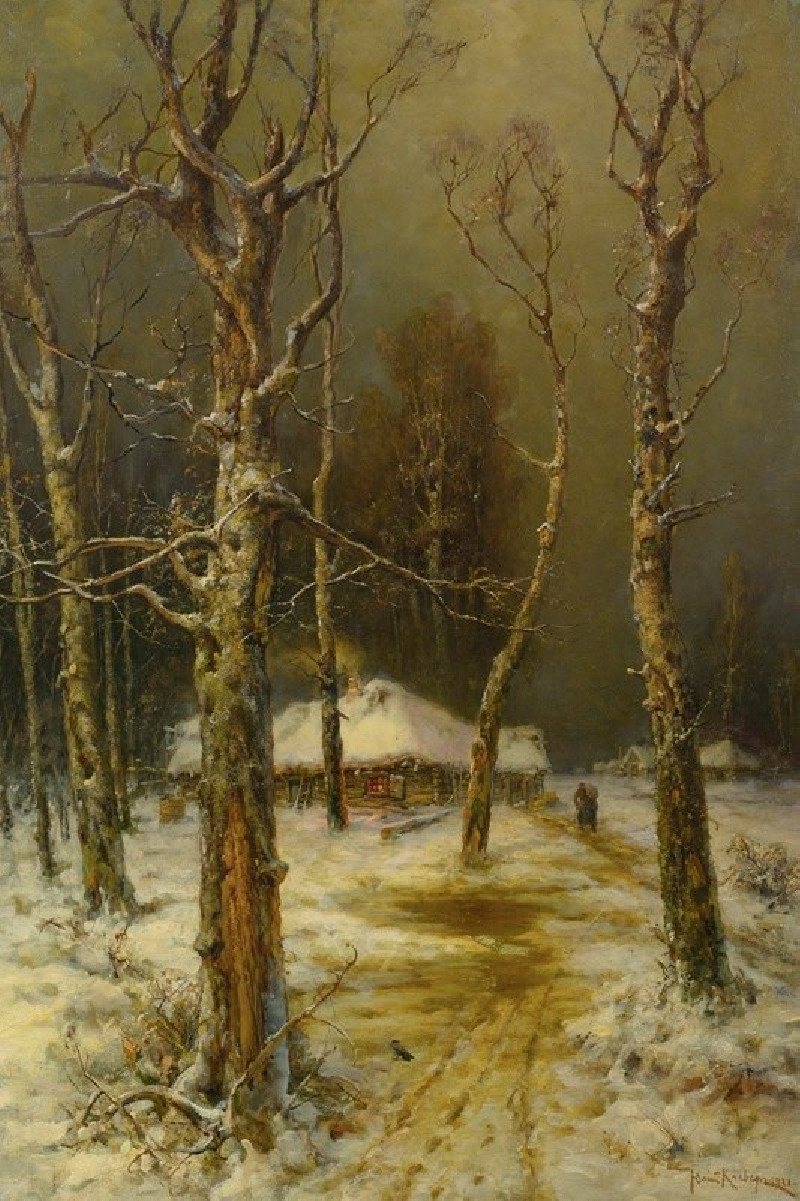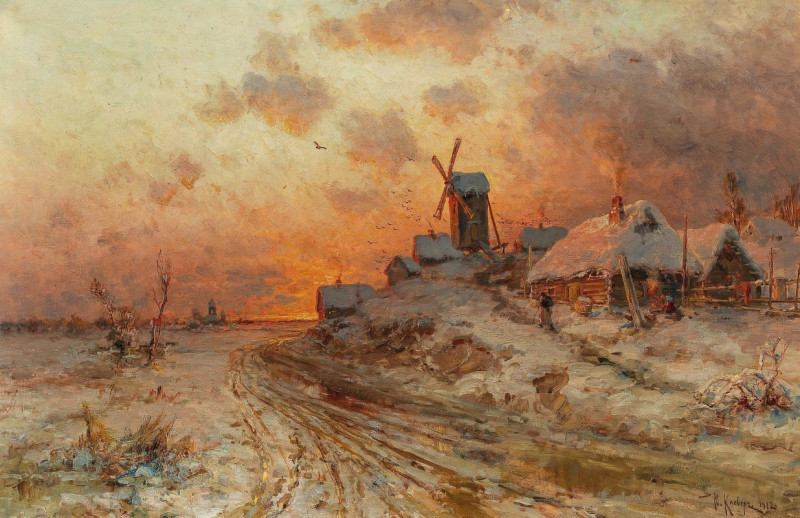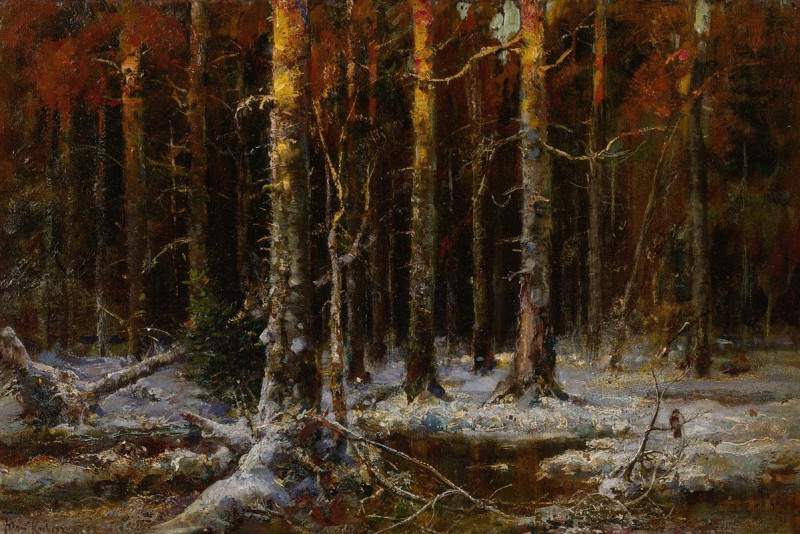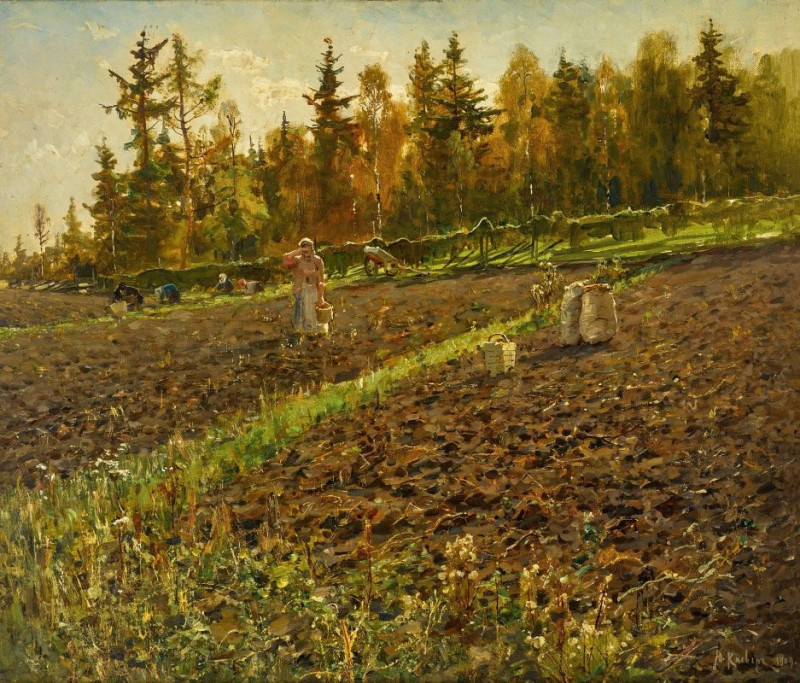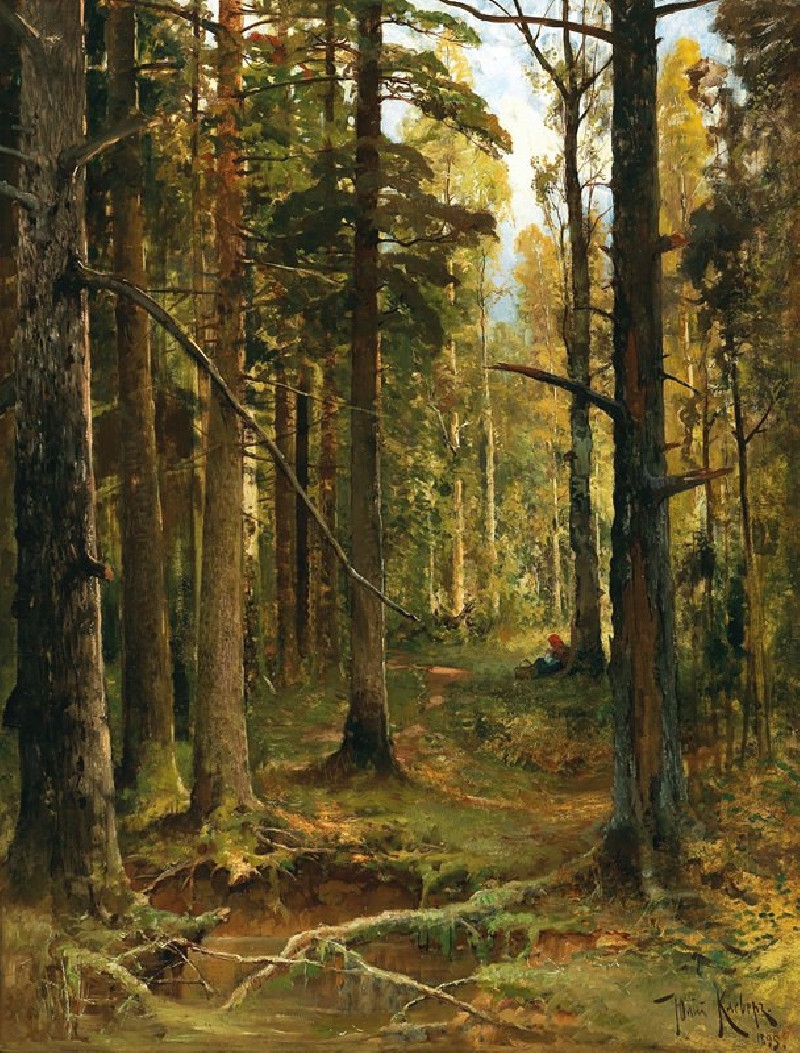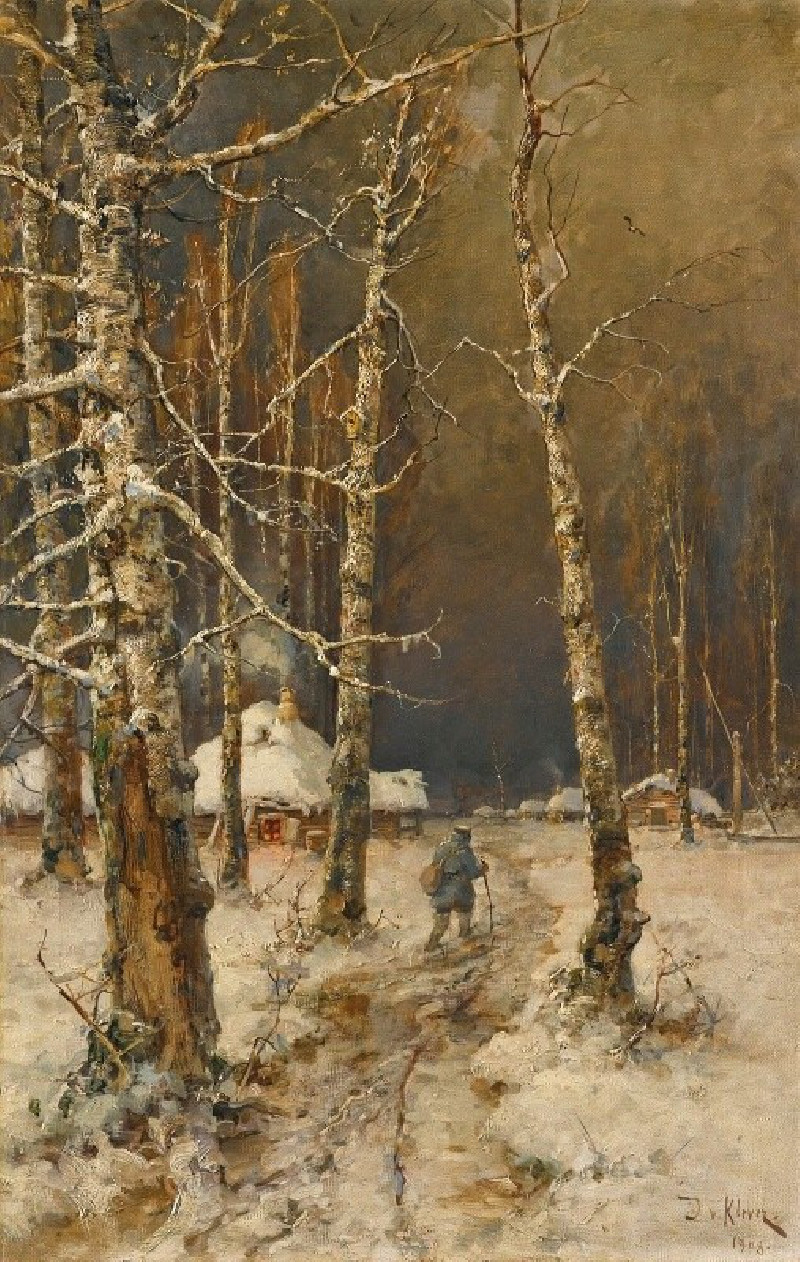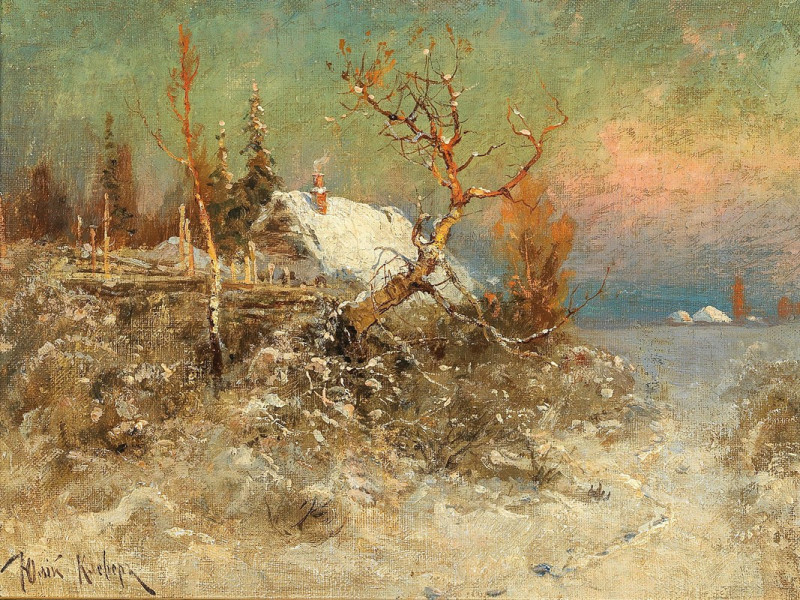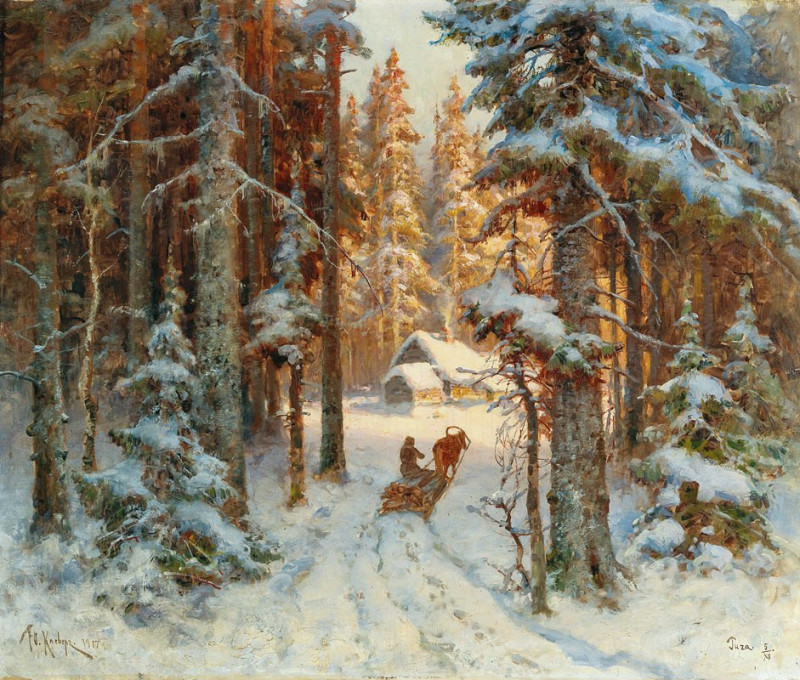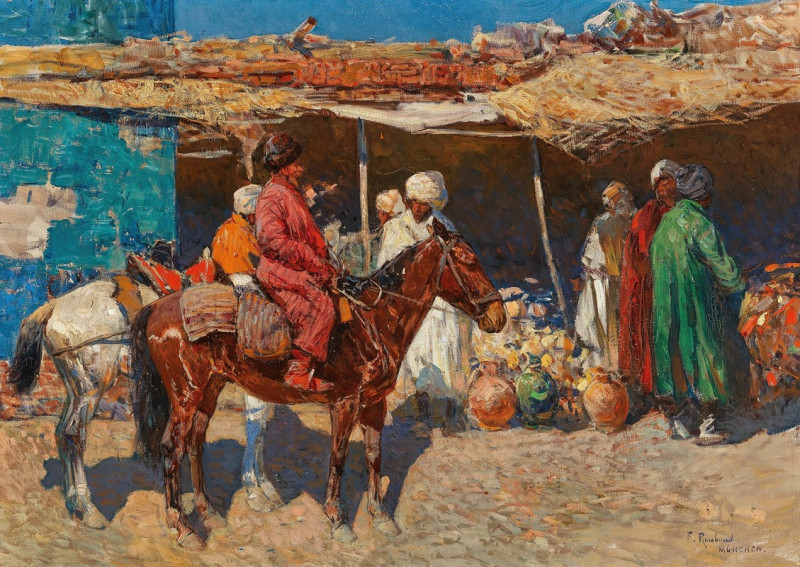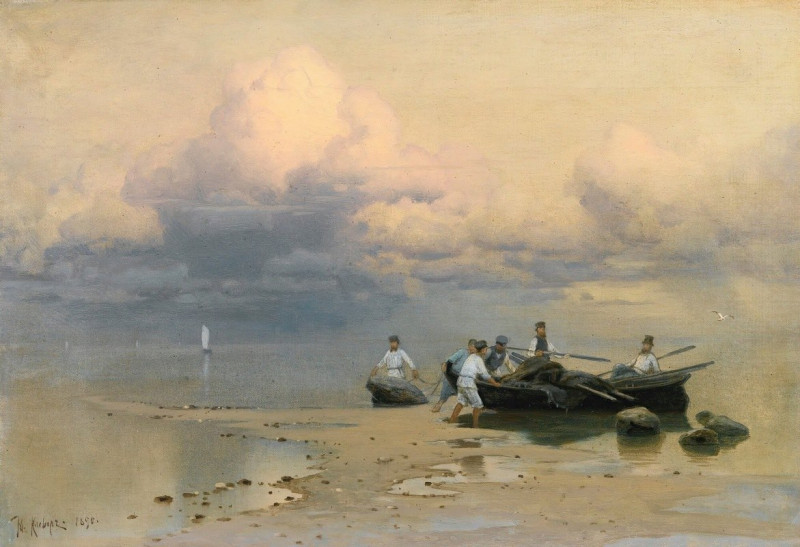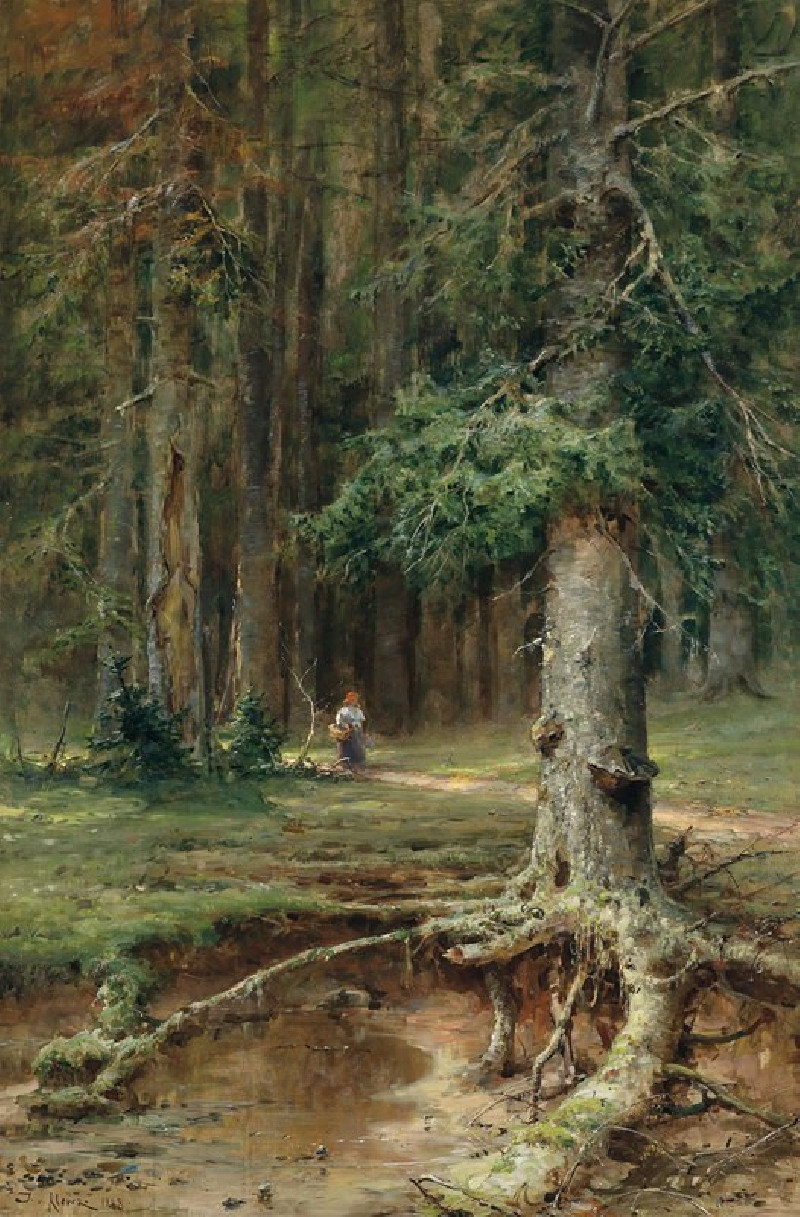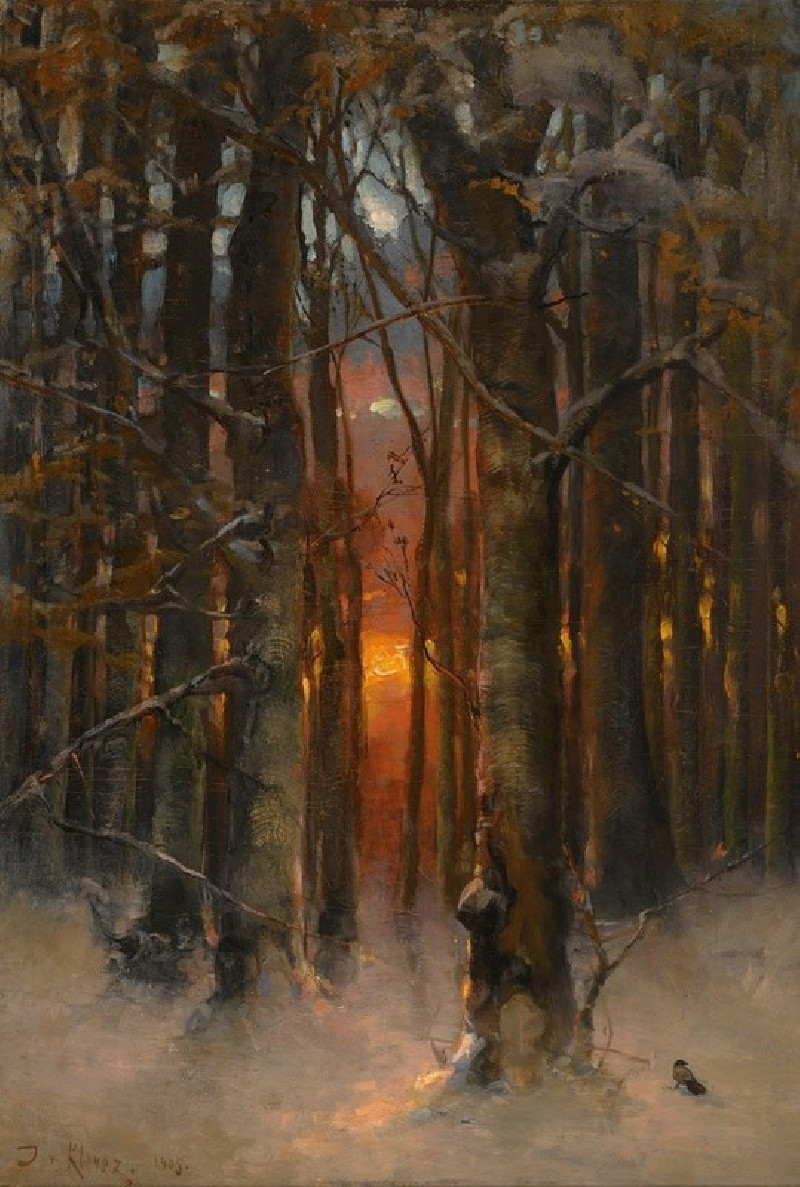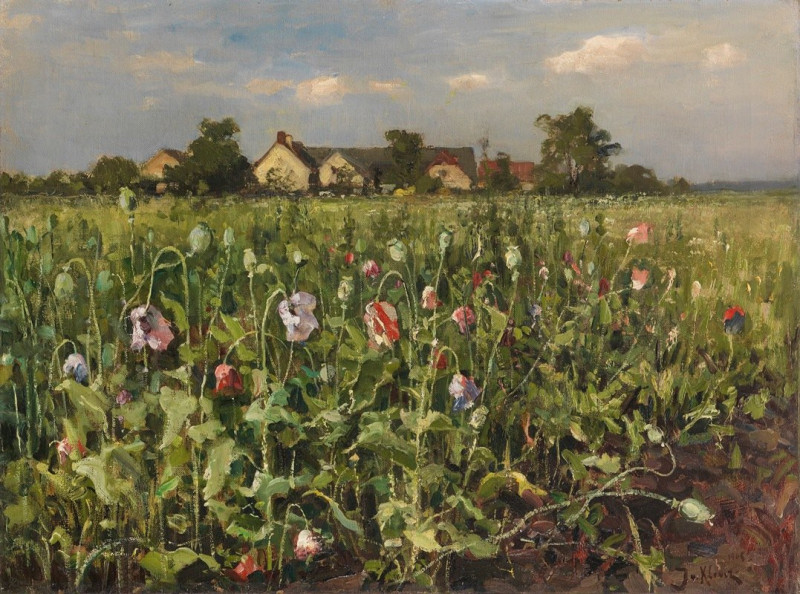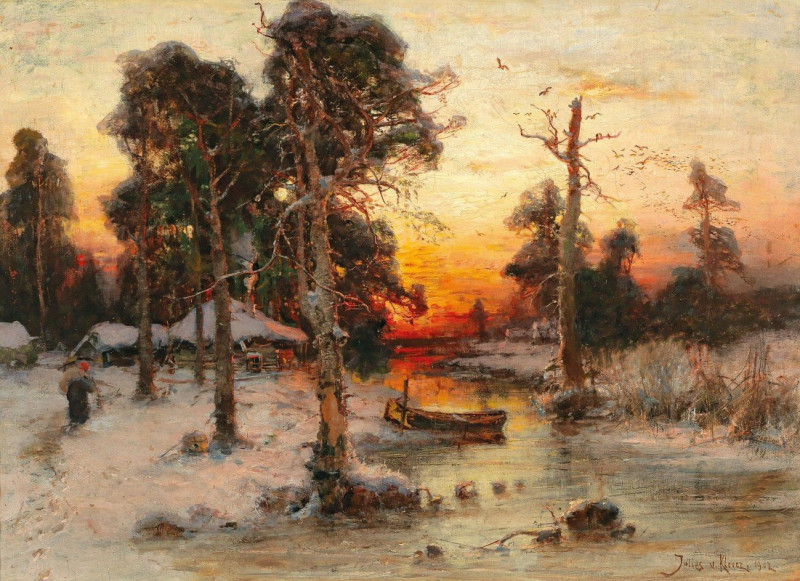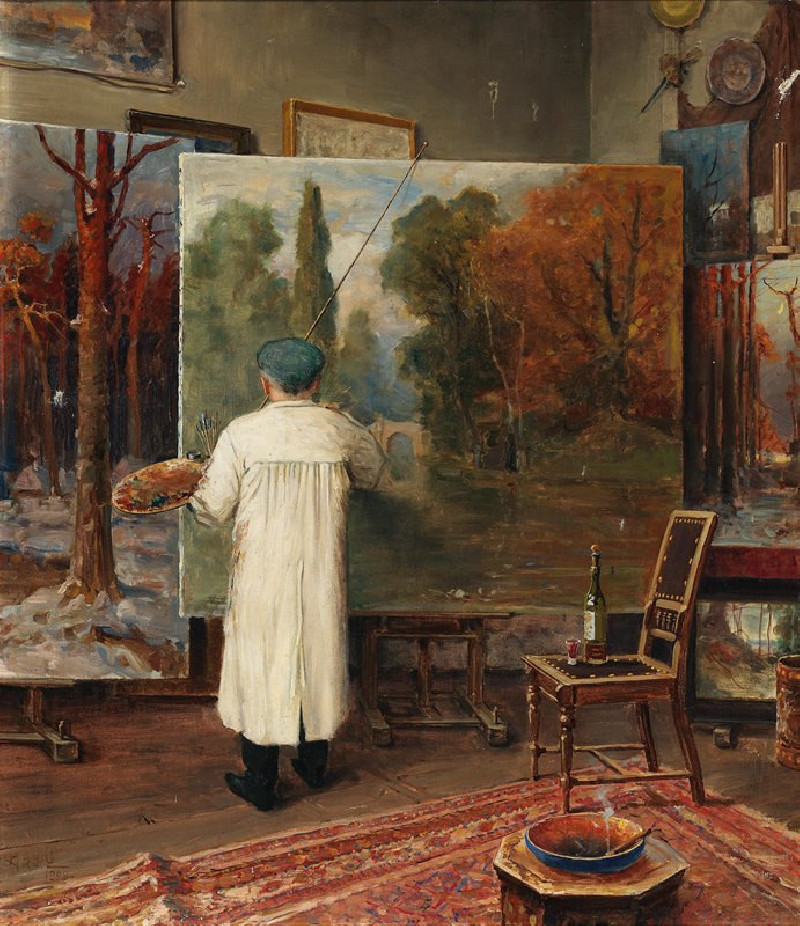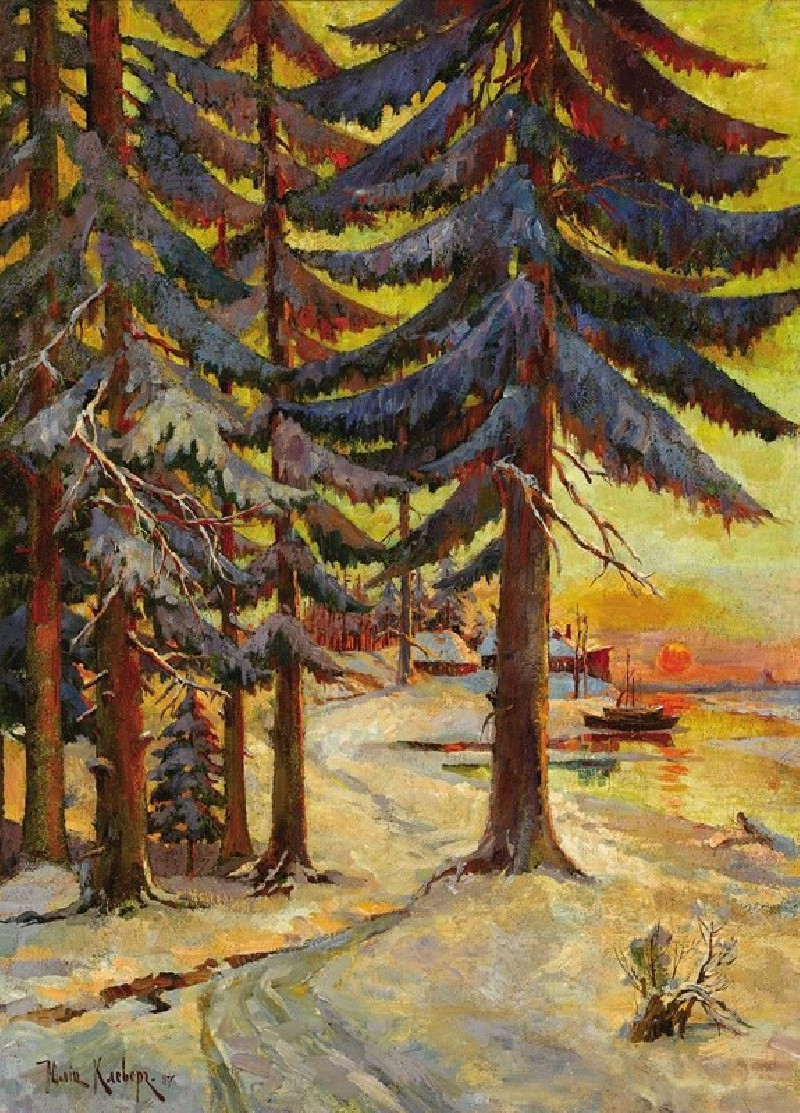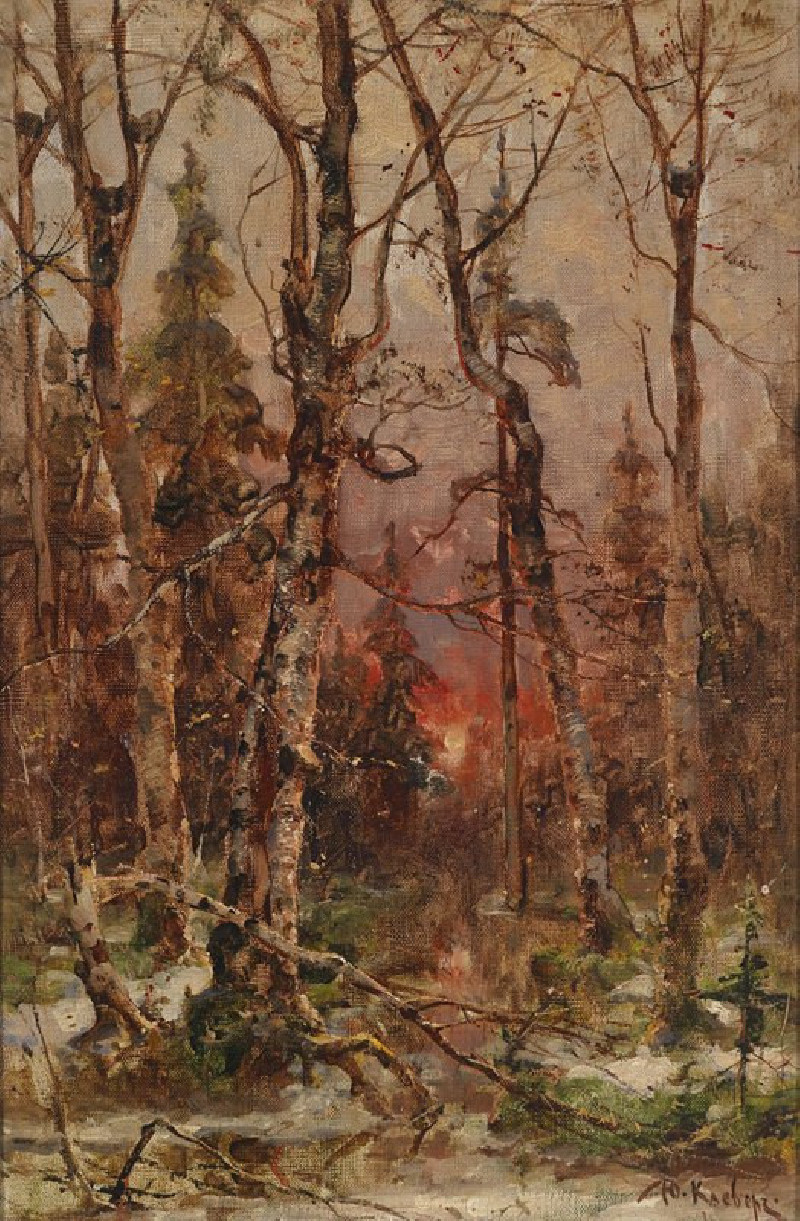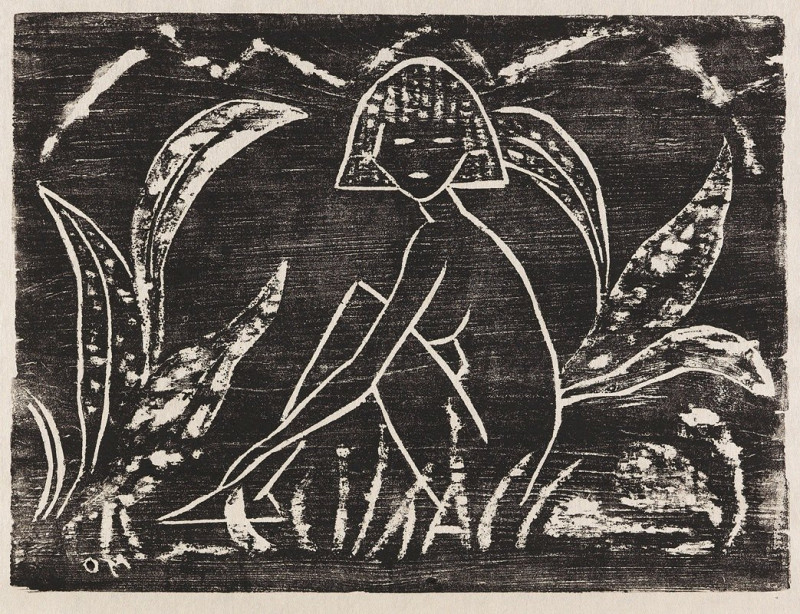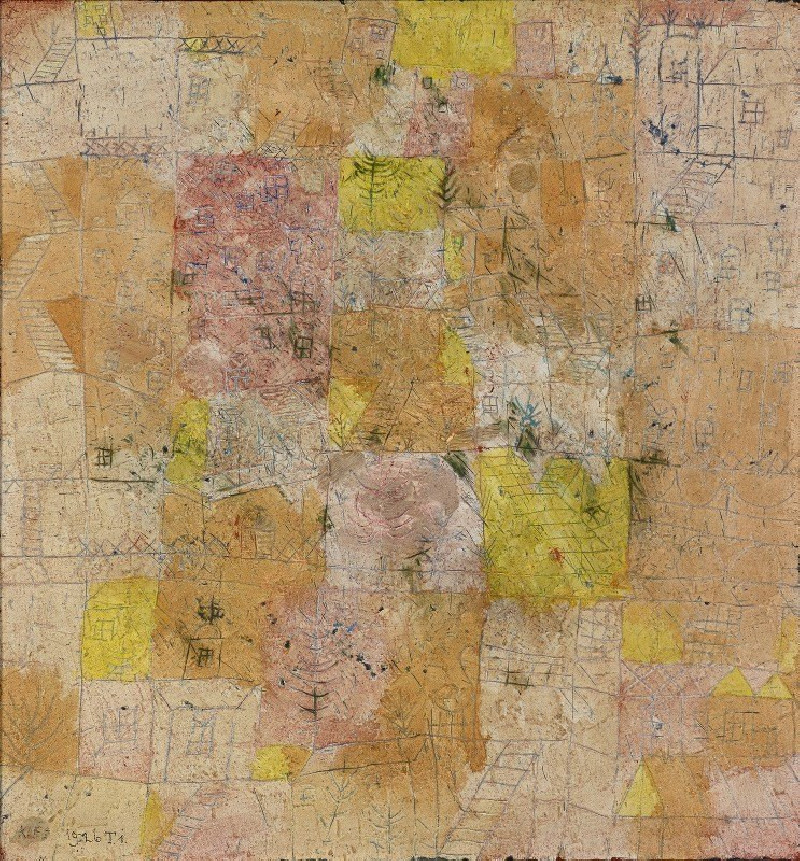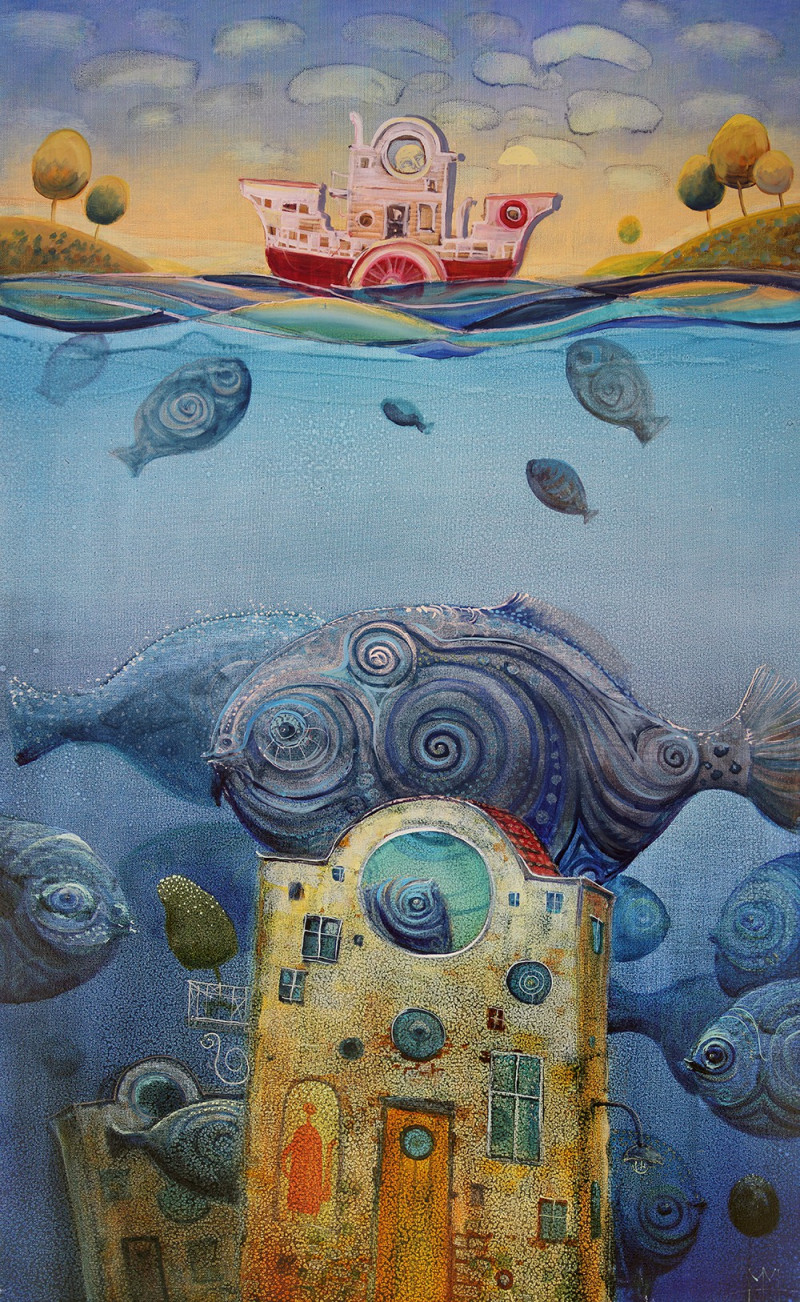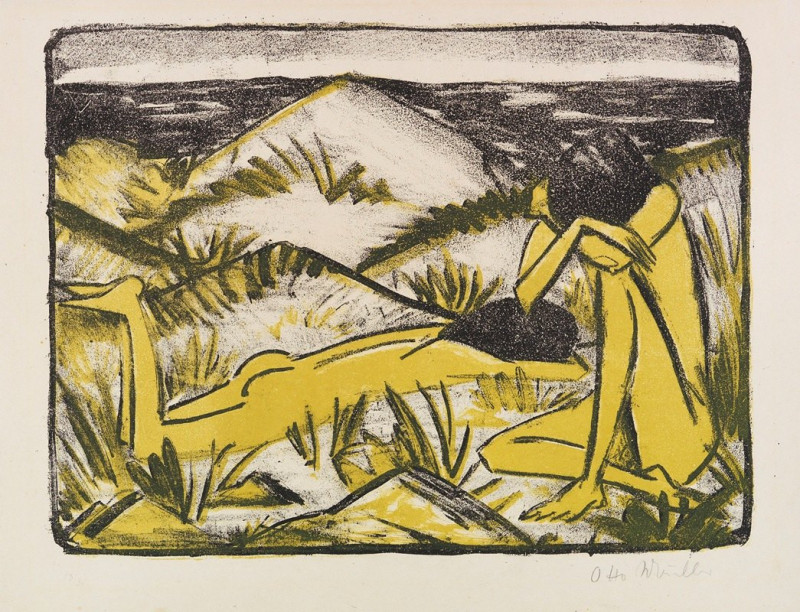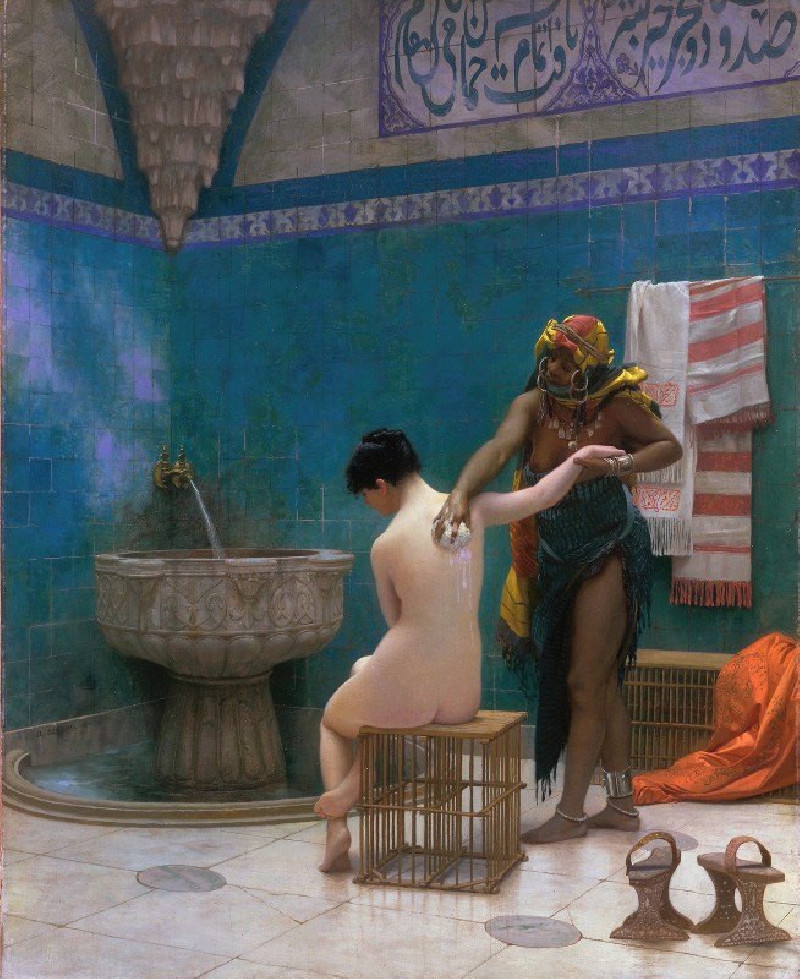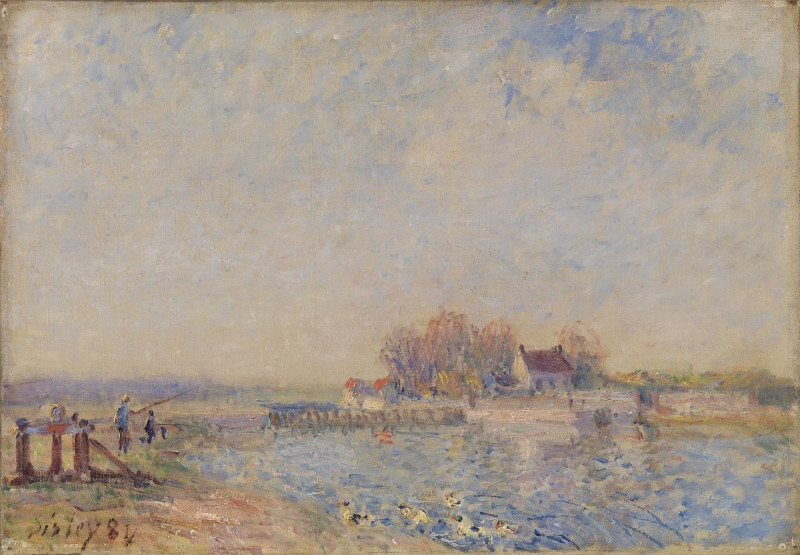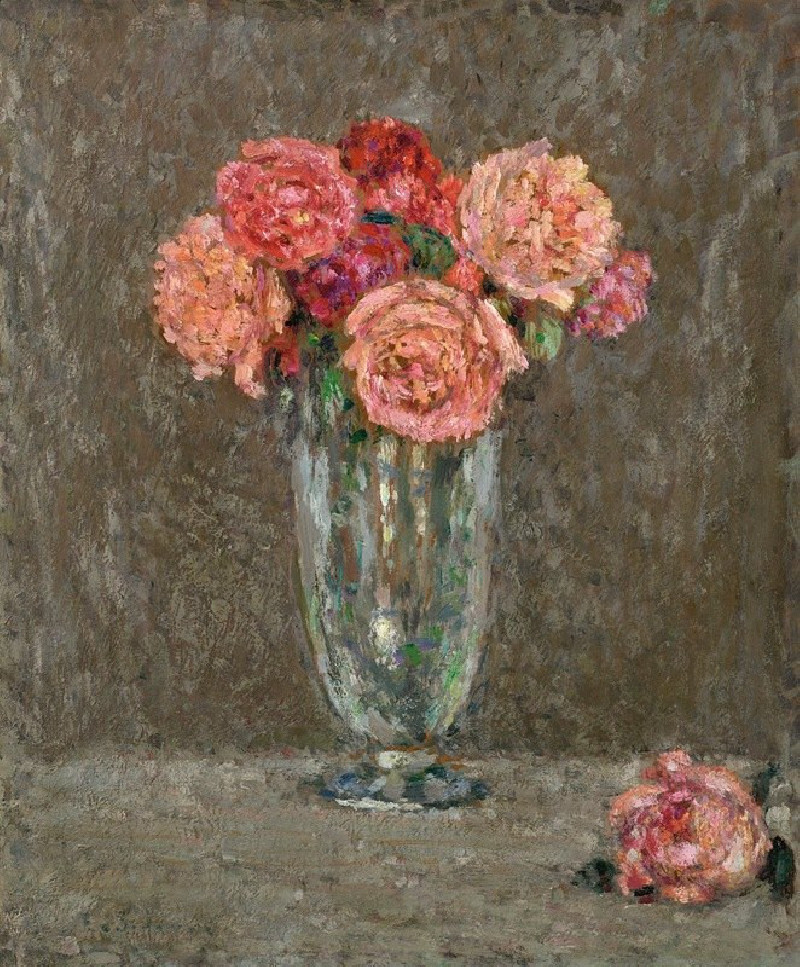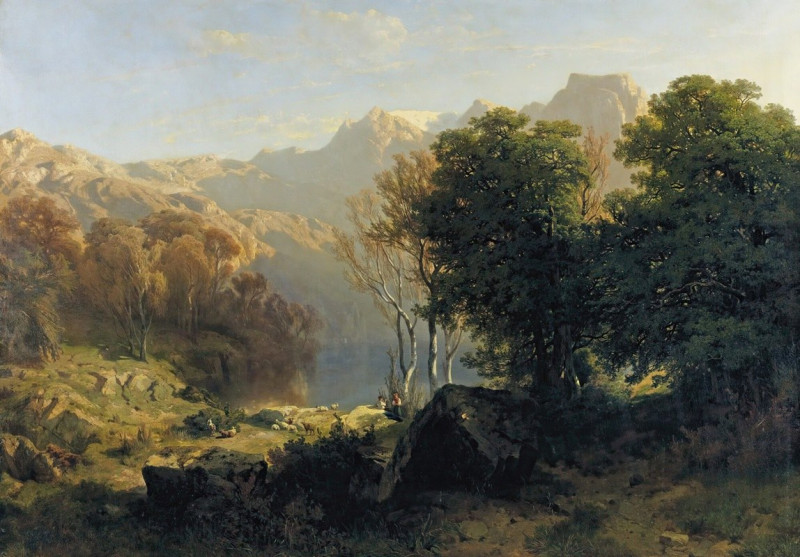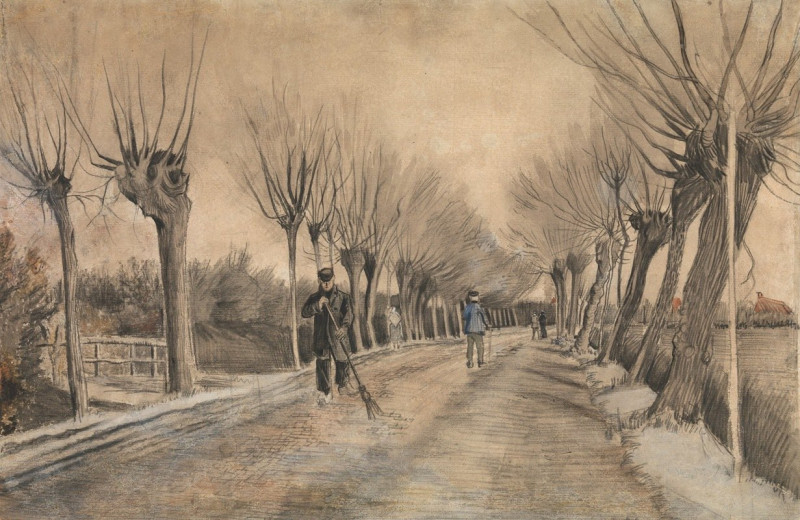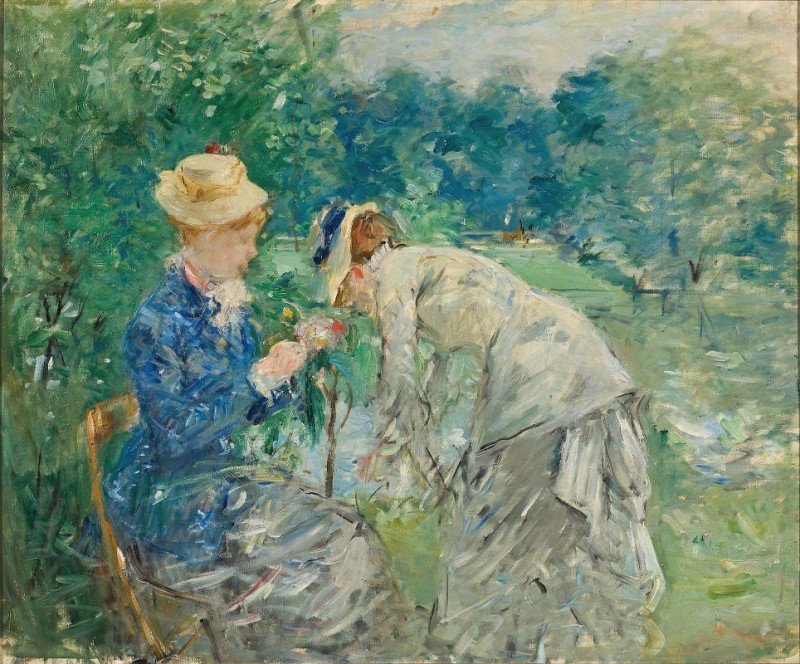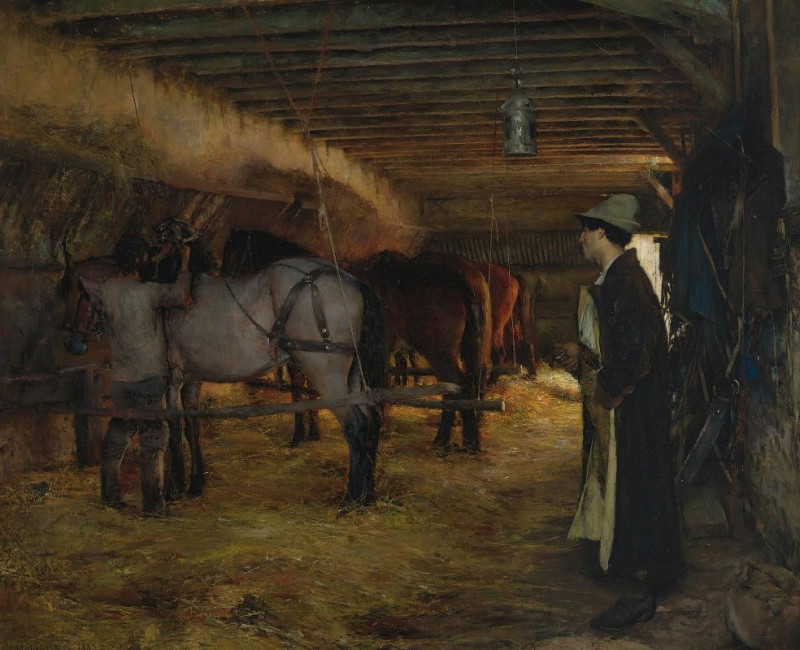A fishing village on the Baltic coast
Technique: Giclée quality print
Recommended by our customers
More about this artwork
Julius Sergius Klever's "A Fishing Village on the Baltic Coast" captures the serene and modest life of a coastal community. Painted in 1900, this artwork evokes a sense of peaceful coexistence with nature, emphasized by subdued tones and a soft, glowing horizon.In the scene, the sun, a luminous orb, dips low in the sky, casting a golden reflection across calm waters and infusing the cold day with hints of warmth. We see wooden fishing boats, some resting on the shore and others afloat, suggesting the daily routine of the villagers whose livelihoods depend on these waters.The foreground features a rugged landscape with debris and a boat ashore, directing our attention to the rough life and resilience of the fishing community. A few buildings, their thatched roofs heavy with the weight of snow, appear to huddle together against the chill of the Baltic wind, emitting wisps of smoke that curl into the twilight air.Figures in the painting are sparse but poignant; a person by one of the cottages hints at human activity and life amidst the stillness. A flock of birds in flight enhances the sense of freedom and the natural setting of the village.Klever’s expert use of light and shadow, combined with his textured brushwork, invites viewers into a moment suspended in time—a day’s end at a quiet fishing village where the vastness of the sky and sea speak of timeless stories.
Delivery
Returns
Julius Sergius von Klever was a Baltic German landscape painter.
His father was a chemist who taught pharmacology at the Veterinary Institute. He displayed artistic talent at an early age and took lessons from Konstantin von Kügelgen. After completing his primary education, was enrolled at the Imperial Academy of Fine Arts where, at his father's insistence, he studied architecture. After a short time, however, he began to take landscape painting classes; first with Sokrat Vorobiev, then Mikhail Clodt.

